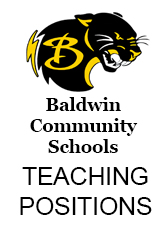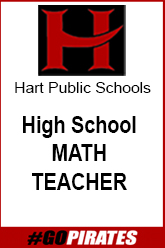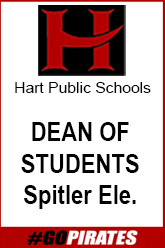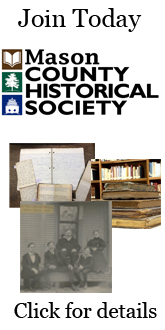 By Joan Young, MCP contributor
By Joan Young, MCP contributor
Have you ever thought the system of dividing the planet with lines of latitude, north and south, and longitude, east and west, was an interesting idea?
It was actually a great idea, first proposed by Eratosthenes, a Greek, in the third century BC. His works were lost with the Great Library of Alexandria, but others built on his original math until we have the system in use today. Latitude begins at the equator, calling this zero degrees, and counting north and south to north 90 degrees and south 90 degrees at the North Pole and South Pole.
The first prime meridian, zero degrees longitude, was set in the Fortunate Isles off the west coast of Africa, the farthest known (to the mathematicians) land to the west in the second century AD. Degrees were spaced east of there. At the time, west of the Fortunate Isles was immaterial!
Making these divisions was simply a matter of geometry. The ancients knew much more than we give them credit for. For example: the earth was a sphere, its diameter, the distance to the moon, the distance to the sun, and more.
In 1884, the Greenwich Meridian was selected by an international committee to be Prime. It is so named because it passes through Greenwich, London, England.
 Any location on the planet can be described by a series of numbers. Since circles were mathematically divided into 360 degrees, this naturally was applied to the globe. Each degree (o) has 60 minutes (‘) and each minute has 60 seconds (“). A degree of latitude is about 69 miles. The stoplight in Scottville (intersection of State and Main streets) is located at N 43°57’17”, W -86°16’46”
Any location on the planet can be described by a series of numbers. Since circles were mathematically divided into 360 degrees, this naturally was applied to the globe. Each degree (o) has 60 minutes (‘) and each minute has 60 seconds (“). A degree of latitude is about 69 miles. The stoplight in Scottville (intersection of State and Main streets) is located at N 43°57’17”, W -86°16’46”
Navigation of the oceans is made much easier with such a system. Surveying and emergency services depend on such information.
Jump ahead to the beginnings of GPS, global positioning systems. The planning for this system began in 1973 with the first satellite being launched in 1984. GPS uses signals from multiple satellites to pinpoint any location on earth. These locations are all indicated by numbers. For example, the Scottville stoplight is also at 43.9548576667, -86.2794971466, or UTM Zone 16T, Easting 557809.53, 4867111.33 Northing. Are you confused yet?
That’s the point. No matter who you are, after a while your brain begins to glaze over with all the numbers.
Enter What3Words in 2013. This London-based company has divided the entire globe into 54 trillion three-meter squares (9.8 feet). Each square is designated by three words prefaced by three forward slashes and separated by periods. This system is available in 50 languages. The Scottville streetlight is ///trunks.flips.thuds.
The system works so well that a number of emergency services use it. Although the algorithm is proprietary, use of it is free. Wikipedia reports that over 85% of British emergency services use the app. I know of several U.S. law enforcement agencies that have added it to their arsenal of tools. On the other hand, it is reported to have various problems with delivering the pinpoint accuracy it claims.
My personal experience with it is excellent. The Avenza app (a popular mapping app for tracking yourself on trails — or anywhere) will recognize and use the system if you also have the What3Words app on your phone. It seems much more user-friendly than long strings of numbers. Yes, one can misunderstand words, or miss that a word is plural. But I think it’s even easier to get a string of numbers wrong if you have to communicate them orally.
It can also generate a laugh or two when the occasional string of three words seem to convey a message. Examples: ///overlooked.atoms.possible or ///eradicate.parachutes.unloaded. Punctuating those in various ways can add to the amusement.
Seriously, you can check it out at what3words.com. Download the app to your phone for free. Get off the couch and go play with it. Don’t forget to have fun!
_________________
Please Support Local News
Receive daily MCP and OCP news briefings along with email news alerts for $10 a month. Your contribution will help us to continue to provide you with free local news.
The easiest way is to sign up for an automatic monthly payment on Paypal. Click this link.
Alternative methods:
- We can send you an invoice for a yearly payment of $120, which you can conveniently pay online or by check. If you are interested in this method, please email editor@mediagroup31.com and we can sign you up. You can also mail a yearly check for $120 to Media Group 31, PO Box 21, Scottville, MI 49454 (please include your email address).
We appreciate all our readers regardless of whether they choose to continue to access our service for free or with a monthly financial support.
If you would like to support MCP/OCP but do not wish to receive daily emails, please consider sending a contribution to any of the above methods or pay by Venmo (@masoncountypress).
_____
This story and original photography are copyrighted © 2024, all rights reserved by Media Group 31, LLC, PO Box 21, Scottville, MI 49454. No portion of this story or images may be reproduced in any way, including print or broadcast, without expressed written consent.
As the services of Media Group 31, LLC are news services, the information posted within the sites are archivable for public record and historical posterity. For this reason it is the policy and practice of this company to not delete postings. It is the editor’s discretion to update or edit a story when/if new information becomes available. This may be done by editing the posted story or posting a new “follow-up” story. Media Group 31, LLC or any of its agents have the right to make any changes to this policy. Refer to Use Policy for more information.
Please consider helping to fund local news. Mason County Press and Oceana County Press are available for free thanks to the generous support of our advertisers and individuals. Three ways to help us: Venmo: @MasonCountyPress; Paypal: MasonCountyPress@gmail.com; Mail a check to PO BOX 21, Scottville, MI 49454.














































.png)























